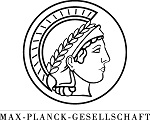Team:Goettingen/Project
From 2012.igem.org
| Line 561: | Line 561: | ||
<table> | <table> | ||
<tr><td> | <tr><td> | ||
| - | <b>Sensing and the mechanism of chemotaxis</b><br> | + | <p align="justify" style="line-height:1.6em"><b>Sensing and the mechanism of chemotaxis</b><br> |
| - | Chemotaxis is a phenomenon whereby cells or organisms direct their orientation or movement in relation to a gradient of chemical agents (Fig 1). These chemical agents are known as chemoattractants and chemorepellants, which are inorganic or organic substances like amino acids and sugars. They are able to activate chemotaxis in motile cells. This chemotaxis behavior is triggered by binding of chemoattractants or chemorepellants to chemotaxis receptors such as the target of our iGEM project, the aspartate receptor Tar. | + | Chemotaxis is a phenomenon whereby cells or organisms direct their orientation or movement in relation to a gradient of chemical agents (Fig 1). These chemical agents are known as chemoattractants and chemorepellants, which are inorganic or organic substances like amino acids and sugars. They are able to activate chemotaxis in motile cells. This chemotaxis behavior is triggered by binding of chemoattractants or chemorepellants to chemotaxis receptors such as the target of our iGEM project, the aspartate receptor Tar.</p> |
</td></tr> | </td></tr> | ||
| Line 575: | Line 575: | ||
<tr><td> | <tr><td> | ||
| - | Chemotaxis is based on high-order intracellular signaling structures. Clustered receptors in the cell wall of bacteria sense signals and mediate downstream signaling in the cell via associated proteins in a highly cooperative manner [2]. These high-order intracellular signaling structures are also known as two-component systems. | + | <p align="justify" style="line-height:1.6em">Chemotaxis is based on high-order intracellular signaling structures. Clustered receptors in the cell wall of bacteria sense signals and mediate downstream signaling in the cell via associated proteins in a highly cooperative manner [2]. These high-order intracellular signaling structures are also known as two-component systems. </p> |
</td></tr> | </td></tr> | ||
| Line 587: | Line 587: | ||
<tr><td> | <tr><td> | ||
| - | A two-component system consists of a sensory histidine kinase and a phosphorylable response regulator [2] (Fig 1). Transfer of the phosphate group from a histidine residue of the kinase domain to an aspartate residue of the response regulator activates the output domain. This normally results in activation of gene expression. <br> | + | <p align="justify" style="line-height:1.6em">A two-component system consists of a sensory histidine kinase and a phosphorylable response regulator [2] (Fig 1). Transfer of the phosphate group from a histidine residue of the kinase domain to an aspartate residue of the response regulator activates the output domain. This normally results in activation of gene expression. <br> |
Beside the aspect that the sensing in E. coli is coupled to flagella-based motion, the two-component system is more complex. There are five histidine-kinase-associated chemotaxis receptors of E. coli known. The receptors are typically arranged as a trimeric application of dimeric receptor subunits (trimers of dimers) that are spanning through the membrane. The receptors are methyl-accepting chemotaxis proteins (MCPs) that are directly associated with CheA, a histidine autokinase and CheW, an adaptor protein that couples CheA to the receptor protein. <br> | Beside the aspect that the sensing in E. coli is coupled to flagella-based motion, the two-component system is more complex. There are five histidine-kinase-associated chemotaxis receptors of E. coli known. The receptors are typically arranged as a trimeric application of dimeric receptor subunits (trimers of dimers) that are spanning through the membrane. The receptors are methyl-accepting chemotaxis proteins (MCPs) that are directly associated with CheA, a histidine autokinase and CheW, an adaptor protein that couples CheA to the receptor protein. <br> | ||
There are two conformational states of receptor kinases possible: the kinase-on and kinase-off state [3]. In kinase-off state the counter-clockwise (CCW) rotation is active, which leads to forward swimming. In the kinase-on state CheA autophosphorylation is activated due to repellent binding whereas in the kinase-off state autophosphorylation is inactive due to attractant binding (Fig 3). <br> | There are two conformational states of receptor kinases possible: the kinase-on and kinase-off state [3]. In kinase-off state the counter-clockwise (CCW) rotation is active, which leads to forward swimming. In the kinase-on state CheA autophosphorylation is activated due to repellent binding whereas in the kinase-off state autophosphorylation is inactive due to attractant binding (Fig 3). <br> | ||
| Line 593: | Line 593: | ||
The methylesterase CheB and methyltransferase CheR are counterplayers in sensory adaptation. Here, the MCPs play a crucial role. Both MCP sites have glutamines in their structure. These are functional mimics of methyl glutamates. In the case of CheB is bound to a phosphate group from CheA, it mediates deamidation of glutamines to methyl-accepting glutamates. Therefore the receptor is in the off-state with a high attractant affinity and it is likely to be methylated but not demethylated [3]. Because the kinetics of methylation and demethylation are relatively slow, adaptation can take tens to hundreds of seconds [2].<br> | The methylesterase CheB and methyltransferase CheR are counterplayers in sensory adaptation. Here, the MCPs play a crucial role. Both MCP sites have glutamines in their structure. These are functional mimics of methyl glutamates. In the case of CheB is bound to a phosphate group from CheA, it mediates deamidation of glutamines to methyl-accepting glutamates. Therefore the receptor is in the off-state with a high attractant affinity and it is likely to be methylated but not demethylated [3]. Because the kinetics of methylation and demethylation are relatively slow, adaptation can take tens to hundreds of seconds [2].<br> | ||
All in all, E. coli switches from tumbling to swimming when it is surrounded by a gradient of attractants. Increased attractant stimulation results in both, terminating tumbling and activation of swimming towards the attractants [2]. | All in all, E. coli switches from tumbling to swimming when it is surrounded by a gradient of attractants. Increased attractant stimulation results in both, terminating tumbling and activation of swimming towards the attractants [2]. | ||
| - | + | </p> | |
</td></tr> | </td></tr> | ||
Revision as of 23:10, 24 August 2012

|
Language:
| Our Project
Our project was born from the idea to create a real champion: the fastest E. coli in the world. As funny as this may sound at first, soon we were at the development of an ambitious plan to create our "Homing Coli" and apply its speed for selective purposes. The ultimate goal was a fast swimming E. coli strain which would be able to recognize specific molecules on a mutagenized receptor and head towards gradients of these substances on swimming agar plates. If this approach worked, it might be put to use for the recognition of various molecules such as pollutants, toxins or even cancer cell markers. As our planning moved on, we soon created three different focus groups which should work in parallel on the biggest and most crucial components of our project.
| Chemotaxis
| Poster
|
↑ Return to top
Team Göttingen Sponsors and Supporter |
 |  |



|
 "
"

